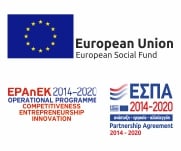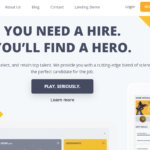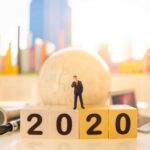It was the Ancient Greek pre-Socratic philosopher Heraclitus who stated that “everything flows”, meaning that all things undergo change and although sometimes change is not obvious, it is still happening.
Today, more than 2,500 years later, nothing could be truer; the way we communicate, the way we travel, the way we work, everything is dramatically changing. The corporate world is constantly facing new challenges; geographical limits do not exist; the speed of transactions is almost unbelievable; and all these changes in the way we work are certainly transforming HR.
HR academics and professionals globally have been trying to predict and keep up with these changes. New, and often unexpected, human resource management trends have not only appeared, but also been adopted by top businesses around the world. Employees and employers, decision makers, policy planners, everyone participating in and interacting with the corporate world needs to be aware of this new workplace reality, which of course is still under formation.
According to Zan Schawbel at FORBES, 2016 has introduced remarkable changes in human resource management. After discussing with and interviewing key HR executives, Zan believes that workplace flexibility becomes the biggest topic of conversation. And if we take into account the fact that more and more professionals around the world seek freelance projects instead of full-time jobs as the sharing economy expands, it is obvious that we are shifting towards a new form of employment, where freelancers are important players and talented service providers will be required by organizations.
Moreover, companies get serious about office design and use it as a way to increase collaboration and attract top talent. Google did it first, Microsoft followed, now the rest of the corporate world follows! “Informal” rooms, offices that are specifically designed for teamwork, looser rules, recreational areas, daily social events for colleagues, anything that enhances employees relationships, lower stress levels and ideas generation.
In the meanwhile, companies figure out how to automate more jobs and modernize their workplaces using technology. This is expected to cause a drop in the number of employees needed to perform certain tasks, but there will be an increase in demand for highly skilled and tech savvy executives.
However, the most interesting HR trend for 2016 presented by FORBES is the following: for the first time, companies tend to accept boomerang employees, i.e. to rehire employees that had left the company in the past. The reason for proceeding with this controversial recruitment practice is that these employees were part of the company mentality, require less training and can more rapidly complete projects than newcomers. Logic as it may seem, this creates indisputable challenges for job seekers.
Taking it one step further from the FORBES aforementioned office design concept, the HUFFINGTON POST presents the overall improvement of the employee experience as a major current HR issue. Human resource focus is shifting towards improving the employee experience in terms of the natural environment, the way work is done and the enhancement of the relationships between colleagues
On the other hand, well-being and resilience become more and more important; uncertainty and socioeconomic turbulence increase stress levels and employees are asked to achieve difficult goals. So, physical, emotional and mental well-being and resilience make up for that pressure.
However, the improvement of the employee experience and the emphasis on well-being and resilience seem to be part of a more general new corporate framework, which has to do with developing the human side of the business. According to Annemie Ress, Former Global HR Director, eBay and Skype, “businesses need to encourage their people to develop mindsets geared towards connection, conversation and experimentation.” Businesses need to be viewed as organizations that can experiment and fail. It is those elements of the human side of organizations that lead to success.
In addition, HUFFINGTON POST has chosen to present data driven recruiting as the number one HR trend for 2016. Maud Durand, Strategic EMEA Sourcer, Facebook, states that “talent acquisition leaders can arm themselves with data and become very strategic in their decisions”. Data driven recruiting is already taking place and new forms of it, like gamification, are expected to take over in the next few years.
Along with data driven recruiting, big data analysis has been put into use and transforms the decision making process in human resource management globally. Companies can drastically improve operational performance and find solutions to corporate issues through investing in and leveraging employee data. These two aspects of human resource, i.e. data driven recruiting and big data analysis, are generally referred to as Digital HR.
Digital HR is also mentioned as a major human resource trend by DELOITTE in the article Digital HR: Revolution, not evolution. As it is noted, this digital transformation poses two fundamental challenges: first, HR can help business leaders and employees shift to a digital mind-set, a digital way of managing, organizing, and leading change; second, HR has the opportunity to revolutionize the entire employee experience by transforming HR processes, systems, and the HR organization.
Again, design thinking (“crafting the employee experience”), the rise of teams in organizational design, the gig economy and people analytics are listed as top HR issues by DELOITTE in the digital era. But what is really intriguing is what DELOITTE proposes as the new learning process in organizations: in this fresh organizational learning concept, corporate learning departments are shifting from education providers to content curators. Their mission is to develop innovative platforms that turn employee learning and development into a self-driven pursuit.
Another fascinating idea presented by DELOITTE is a brand new look on employee engagement: under the evolving social contract between employer and employee, workers become “volunteers” to be reengaged and re-recruited each day. That being said, it is obvious that engagement and retention are constant ongoing processes, closely connected to the workforce’s desire for flexibility, creativity, and purpose.
So, HR is changing. It is shifting towards a more digitalized model, but also towards a more human model. The workforce is expected to achieve more, but it will be provided the means to do it in a more pleasant and more efficient way. One thing is for sure: executives must make sure to stay up-to-date with digital tools and continuously enhance their digital skills, in order to be able to understand the new workplace and the changes it is about to undergo. After all, everything flows!










